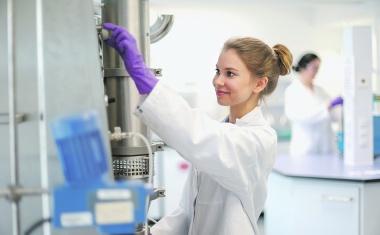Winning Back Trace Elements
Downside of Modern Life - The technological development of the past few decades has grown at a considerable pace. Modern society has become saturated with high-tech gadgets, instant microwave-prepared meals, while living healthy has taken a back seat. Lack of sleep, long working hours, stress and irregular meals have become a significant part of today's lifestyle. In relation to the rural population, households that live according to natural economy principals cannot boast about the sustainability of their diet either. Polluted water and air are making it impossible to harvest 100% healthy food. As a result, it is exceptionally difficult to maintain an adequate level of trace elements solely through a balanced diet.
The Deficiency of Trace Elements - The Evil of The 21st Century
The problem of trace element deficiency has become a global issue, and the World Health Organization (WHO) was the first institution to appeal for change. Looking for the cheapest and yet the most effective way to enrich the formulations with trace elements has become a common practice for R&D departments in the leading fast-moving consumer goods (FMCG) companies.
Element deficiency is an issue that equally applies to disadvantaged populations and industrialized countries, which is why the WHO has declared micro-elemental deficiency to be a global problem. In the modern world, more than two billion people suffer from micronutrient deficiencies caused largely by a lack of vitamins and minerals. The solution lies in fortifying medicines, food additives and cosmetics as main providers of trace elements into the human organism.
The Role of Trace Elements in Cosmetics
Since cosmetic and personal care products have become commodities, it is advantageous to use them as a source of trace elements. The deficiency of microelements negatively affects tonus, causes dehydration and reduces the elasticity of cutaneous covering. Sufficient level of microelements favors cell metabolism, generation of collagen and elastin, which affect skin regeneration. Trace elements serve as catalysts of vitamin synthesis and assist in the production of proteins, which are vital for sustaining skin health and, therefore, the whole organism. Some of the main market players have been particularly innovative in launching whole lineups enriched with minerals.
The Market of Raw Materials
As a result of market demand, raw material suppliers are bringing out a wide range of trace elements. The presented raw materials can be distinguished by their origin (organic or inorganic), state (solid or liquid), and, in their qualities and price, accordingly.
Organic minerals (usually in the form of citrate, rarely lactate, gluconate or acetate) are found in natural foods, therefore, they are the most familiar to the human body. In contrast, inorganic compounds, such as oxide, sulfate or phosphate are to a high extent alienated by our bodies. Liquid solutions of minerals outperform the powder analogues by the ease of use in various formulations.
Nano: Pros And Cons
Additionally, trace elements vary in their production method. Recent technological developments have shown that metals are inclined to obtain obscure qualities, if taken as small particles, namely nanoparticles.
Metal nanoparticles often possess strong catalytic and absorptive qualities. Solutions containing nanoparticles are quickly immersed with the formulation, which means they have a rapid effect on skin.
When experimenting with nanoparticles, researchers and product engineers encountered a negative phenomenon - it is typical for nanoparticles to create agglomerates, which leads to their uneven spread in the formulation. Some would even argue that nanoparticles are toxic. The effect of metal nanoparticles on human beings, animals and the environment requires further scientific research, and the introduction of active and unpredictable nanoparticles of metals into cosmetics and food should be strictly limited. Nanoparticles can be used in production processes, but they should be entirely eliminated from end-customer goods.
The problem that scientists are pondering is how to preserve the special qualities of nano-sized materials, while creating stabilized non-toxic compounds.
Nanocarboxylates - Breakthrough Innovations in Bionanotechnology
The solution was developed by a group of Ukrainian scientists. In June 2009, they patented a state-of-the-art technology for obtaining metal nanoparticles. The innovation was named erosion-explosive nanotechnology.
During the first stage of production, pure metal granules (e.g. silver 99.99%) are placed into de-ionized water. Electrodes facilitate the electric explosions in the reactor, which results in a drastic change of the metal state, and a vast amount of energy is generated. The energy produced heats the metal and, consequently, causes an explosive dispersion. In layman's terms, high temperatures compel the metal to break into pieces.
Adjusting the frequency of explosions enables the production of nanoparticles of 10 to 50 nanometers in size. The obtained particles are called nanoaquachelates (nanoparticles in aqueous solution). Throughout the second stage of production, a carboxylic acid (e.g. citric acid) is added. The reaction between positively charged ions and citric acid ensures the formation of ultra-pure ecologically clean non-toxic solutions of metal salts. The obtained aqueous solutions of metal nanoparticles were termed "nanocarboxylates."
Due to this cutting-edge technology, nanocarboxylates possess high bioavailability rate and are recommended for use in cosmetic and food formulations. The most suitable solution for cosmetic and personal care goods is offered by nanocarboxylates of citric acid - citrate complexes. Citric acid occurs in the metabolism of virtually all living organisms, and, therefore, is the most recognizable to the human body.
Creating a Balanced Combination of Trace Elements
While the recommended doses of some of the existing trace elements are minuscule, their application is essential for reinforcing the bioavailability of other important minerals - for instance, copper, which is mostly used to balance high intake of zinc. Apart from pure single metal compounds, the Ukraine-based research and production company NanoUnion produces customized citrate complexes. For example, SumerSil, which is a mixture of silver and copper citrates, where silver is used as a strong antibacterial agent, while copper accentuates the antibacterial qualities of silver.
The modern consumer is well-informed about market trends, and most shoppers tend to purchase organic yet effective and reasonably priced products. To stay competitive, the manufacturers are searching for highly effective active ingredients with high assimilability rates and affordable prices.





